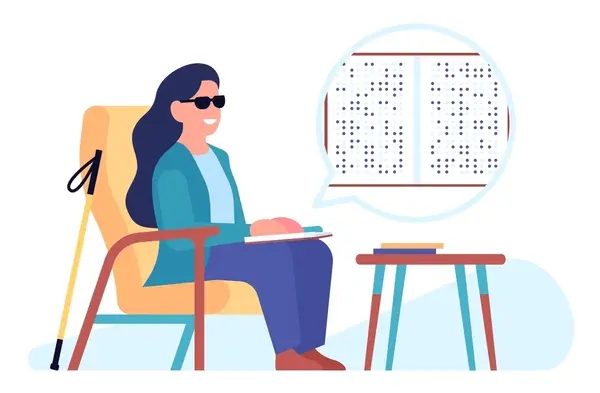Debunking Blindness: Separating Myths from Reality
- visionopolisclinic
- Jun 13
- 2 min read
When most people hear the word blindness, they often picture complete darkness or total lack of vision. However, this limited view contributes to many misconceptions and social stigmas surrounding individuals who are blind or visually impaired. As eye care professionals and advocates, it’s important to educate the public about what blindness really means—and doesn’t mean.

Let’s explore some of the most common myths about blindness and uncover the reality behind them.
Myth #1: All Blind People See Nothing at All
Reality: One of the biggest misunderstandings is that all blind individuals live in total darkness. In fact, only about 10–15% of people with visual impairment are completely blind. The majority have some remaining vision—whether it’s light perception, blurry shapes, or peripheral vision. This condition is known as low vision and varies from person to person.

Myth #2: Blindness Means Complete Dependence
Reality: People with visual impairments live full, independent lives. With the help of tools like screen readers, braille, GPS navigation, and mobility training, many blind individuals travel alone, use technology, pursue careers, and raise families. It’s important to recognize their abilities rather than assume limitations.

Myth #3: Blind People Have Super Senses
Reality: While it’s true that some individuals may become more attuned to their other senses, it’s not because their hearing or touch suddenly becomes “superhuman.” Instead, they learn to rely more on these senses for information and navigation. It’s a skill developed through training and experience—not a magical ability.
Myth #4: You Can Tell Someone is Blind by Looking at Them
Reality: Many people with visual disabilities don’t use canes or guide dogs, and some may not appear blind at all. Invisible disabilities are common in the visually impaired community, and it’s not always possible to tell someone’s vision status by appearance alone. Avoid making assumptions.
Myth #5: Blindness Only Affects the Elderly
Reality: While age-related eye conditions like macular degeneration are common causes of vision loss, blindness can affect people of all ages—including children and young adults. Inherited eye diseases, premature birth complications, trauma, and diabetes are also major contributors.
The Importance of Blindness Awareness
Educating the public about the realities of blindness promotes inclusion, empathy, and better access to resources. It also encourages early eye health awareness, which can help prevent avoidable blindness caused by conditions like glaucoma, diabetic retinopathy, or cataracts.
If you or someone you know is living with vision loss, know that there is a wide network of support through low vision specialists, rehabilitation services, and adaptive technology.
Conclusion
Blindness is not a one-size-fits-all condition. By understanding the spectrum of visual impairment and dispelling common myths, we can build a more informed and inclusive society. Let’s challenge stereotypes and support blind individuals in leading empowered, independent lives.






Comments